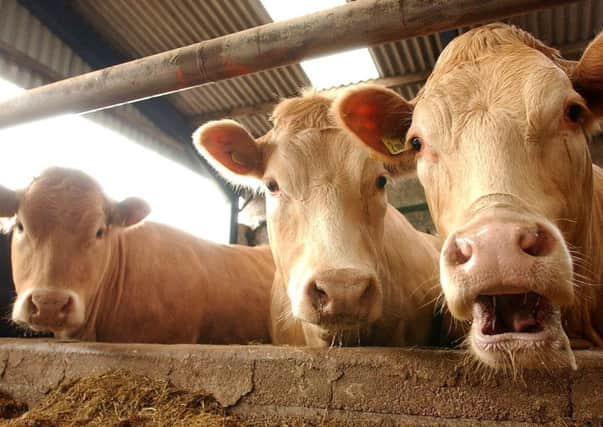Beef producers are urged to '˜think outside the box'
This article contains affiliate links. We may earn a small commission on items purchased through this article, but that does not affect our editorial judgement.


That recommendation to look beyond existing man-made breeds has come from Robert Fleming who has just completed his Nuffield Scholarship.
During his travels through some of the main beef-producing countries in the world such as Brazil, Canada and the US, he looked at systems for gaining efficiency through improved beef genetics. One major finding was the number of progressive beef farmers looking using hybrid vigour and composite breeds in their programmes.
Advertisement
Hide AdAdvertisement
Hide Ad“Some of the best animals I saw in America were composites,” Fleming said. “We should be more relaxed about the cattle we are working with and remember that breeds are man-made.”
During his trip to Brazil, he saw Aberdeen Angus AI being used to upgrade one of their native breeds with the resulting offspring showing the benefits of hybrid vigour.
He stressed he did not see one single composite beef animal as being suitable for the extremely diverse farming that is carried on in Scotland but felt that different combinations might be the answer for different geographical regions.
On his home farm near Glen Luce in south-west Scotland, the Fleming family keep over 200 Aberdeen Angus and Angus crosses with the offspring currently being sold at weaning. However, with an existing on-farm project aimed at increasing the value of home produced forage, the intention is in the future the calves will be taken through to finishing.
Having started his Nuffield scholarship last year, he has already implemented some changes to his home production with the culling of some of the larger, less efficient cows from the herd.
“We took out any cows that were not producing weaned calves of 40 to 50 per cent of their bodyweight. With 70 per cent of all feed going into maintenance, they were less efficient than the smaller cattle. The culled cattle made money in the cast ring and we are now working with more moderate sized and more efficient cattle.”
“I believe you have to keep targeting weaknesses in your cattle and remove any that are not hitting the grade. At the same time, you have to keep looking at bringing in something new to improve what you have.”
As a result of his travels, he is convinced that investment in superior genetics does pay dividends and in the future much more emphasis will be put on multi trait breeding indexes.
Advertisement
Hide AdAdvertisement
Hide AdHe compared the beef industry in this country to the pig and poultry industry, where genetics and feed efficiency have improved dramatically over recent times.
“We [beef producers] are still well behind other livestock sectors and despite us having to work in a very varied environment, we can still make big inroads in improving our production,” he said, adding that he specifically believed there were great advances to be made in improving feed efficiency.
